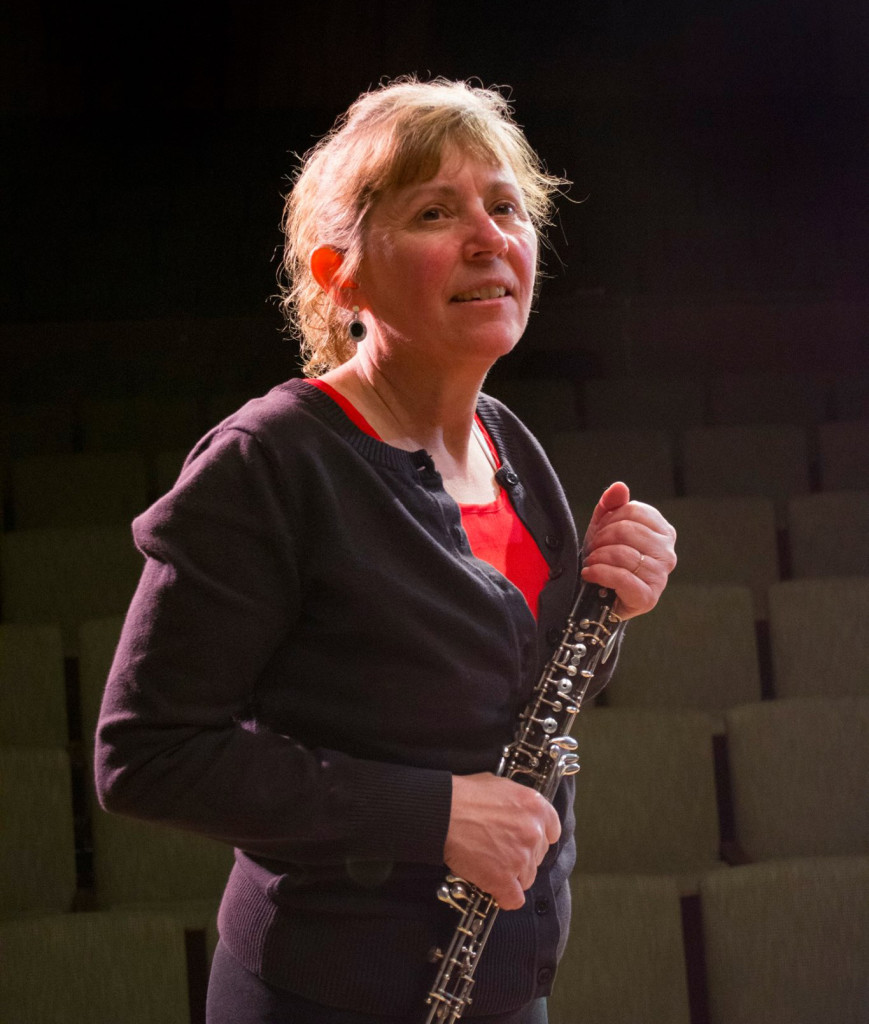‘Soiree Winds’ regales audience with French Composers

Woodwind quintet “Soiree Winds,” an ensemble of experienced performers from both the school faculty and local orchestras in the Maryville and Knoxville area, performed the works of several French composers Friday, Feb. 21, in a program that was as distinct as the musical variation.
In contrast with a string or brass ensemble where the collective sound is solid and sonorous, a woodwind quintet has instruments of such distinct timbres that one can hear clearly how the piece is constructed.
Flutist Shelby Shankland, clarinetist and Maryville College adjunct woodwind instructor Erin Bray, French hornist Henry Hooker, bassoonist Zach Millwood, oboist and MC circulation coordinator Marina Jaffe and guest pianist and Professor Emeritus of Maryville College Robert Bonham played with superb clarity and tonal quality throughout.
Millwood’s personal introduction of the group, as well as the tone of the first piece, gave the Harold and Jean Lambert Recital Hall a relaxed, yet playful wash that continued throughout the evening.
They opened with Adrien Barthe’s “Passacaille,” a piece that mischievously dances around the melody in a contrapuntal texture before coming to a settling melodic resolution. The “Passacaille” was followed by Germain Tailleferre’s “Arabesque,” a piece loosely based on an opera about a “little mermaid.” The flute solo featured a lighthearted Shankland.
The third selection featuring clarinetist Bray, was written by the French composer Grabriel Pierne. Pierne was known to have conducted the world premiere of Igor Stravinski’s riot-starting ballet “Rite of Spring” in 1913. Pierne’s work, “Canzonetta,” however, was much less tonally controversial than the edgy the piece he conducted for Stravinsky. Bray and accompanist Bonham took listeners on a journey with a sweet and lilting melody, followed by extreme highs and lows, descending grace-note patterns and a minor deviation that made the resolution to the original theme all the more gratifying.
“Trois Pieces Breves” by Jacques Ibert brought the quintet together again with an eclectic and upbeat style.
After having many moments of separate and distinct parts featured individually, moved away tonally and resolved together throughout the three movements, “Trois” ended with a playful and intensifying acceleration.
The following two pieces featured Jaffe in both a solo and trio for with bassoon and piano. “Sonata for Oboe, Op. 166” by Camille Sain-Saens was light in quality and texture, most reminiscent of an early morning awakening such as Edvard Greig’s “Morning Song on Flute,” while “Andante” from Francis Poulenc’s “Trio for Piano, Oboe and Bassoon” contained unconventional harmonies and energetic passages.
After Poulenc’s energetic “Trio,” an arrangement of Claude Debussy’s “Reverie” provided for a tranquil mood. Debussy, recognized for his dreamlike, Impressionistic style and the widely-known piece “Claire de Lune,” originally composed “Reverie” for piano. The quintet did well to highlight the delicate intricacies of Debussy’s stylistic qualities.
Pianist Bonham engaged the audience next with the trickling left-hand runs and off-beat right-hand melody of Emmanuel Chabrier’s 1880 “Scherzo-Valse” before the quintet rejoined again for its final two pieces.
Jean-Philippe Rameau’s “Tambourin” was a secretive and inward as the 50-year-old composer himself had been. Written in 1706 for the plucked, piano-like instrument the Harpsichord, “Tambourin” coaxed listeners into an inward, dance-like melody before it ended with a melodic flourish.
The final piece, “Sextuor Pour Vents Et Piano” featured Poulenc once again in three movements. Poulenc’s music is fundamentally tonal, although he made use of harmonic innovations such as pandiatonicism, a use of harmony that is free of the usual classical harmony restrictions and chromatically altered chords that lend to an interesting sound. The piece had an overall feeling of movement and continuity with a texture that sometimes suddenly gave way to moments of sweet contemplation as well as wacky chromatic fanfare.
“We all really love Poulenc for his unique style and musical color,” bassoonist Millwood said. “He has the best expressive quality that really highlights the group’s strengths and personality.”
The group graciously gathered for one additional piece, “Six Bagatelles” by Ligati after audience members’ request for an encore. The piece both began and ended in a spirited quality.
“It’s been one wonderful year together as a group,” oboist Jaffe said. “I’m glad to have the opportunity to play this great music and play with such fantastic people.”

